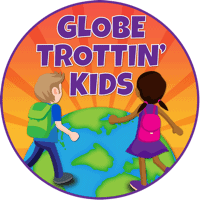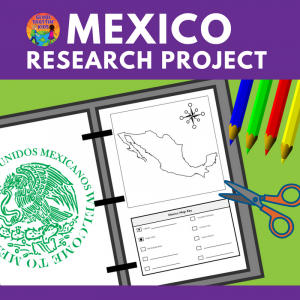Discover the Traditions of Día de los Muertos
Día de los Muertos (Day of the Dead) is celebrated every year on November 1st and 2nd* in Mexico and other Latin American countries and communities. It is believed that during these two days the souls of the dead are allowed to return to the world of the living and visit their families.
It’s a joyous occasion, filled with traditions for honoring and celebrating the lives of deceased family and friends.
* November 1, Día de los Angelitos (Day of the Little Angels), is dedicated to the souls of deceased children. November 2nd is for the souls of adults.
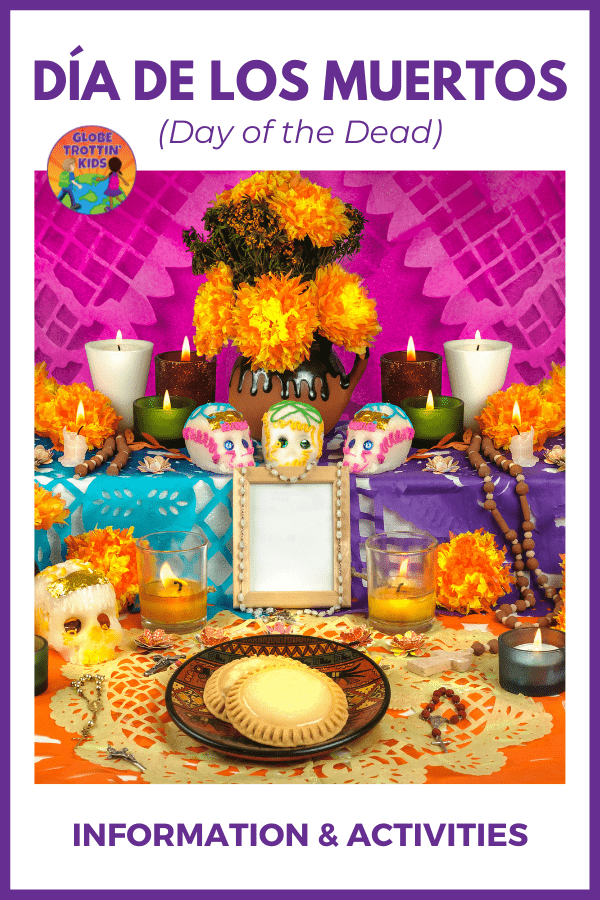
Disclosure: This post contains affiliate links. By clicking through and making a purchase, we receive a small commission at no extra charge to you. All proceeds help support our free global education website. Thank you!
Traditions of Día de los Muertos
Cleaning
In preparation for the arrival of their loved ones, families clean and decorate their homes and graves.
Altars
Altars are created to welcome the souls home and include ofrendas (offerings) such as marigolds, calaveras de azúcar (sugar skulls), candles, incense, paper or clay skeletons, papel picado (paper cuts), water, foods, and objects that represent things the person enjoyed while living.

See examples of how teachers have created classroom displays, altars, and bulletin boards for Día de los Muertos.
Food
Food is an important part of Día de los Muertos. Some are traditional, and some are based on geographical region, family traditions, and personal favorites.
Tamales, sopa azteca (tortilla soup), pozole (stew), and mole (chicken or pork in a sauce made from chilies, chocolate, peanuts, and spices) are popular dishes. Champurrado is a warm chocolate drink that is perfect for the season.

A special sweet bread, pan de muerto (bread of the dead), is baked in the weeks leading up to the celebration and included on the altar. The dome-shaped loaf is crowned with bones and a teardrop or a skull and bones – and dusted with sugar. Smaller loaves are molded into different shapes, like animals and skeletons.
Look for pan de muerto in local bakeries, or try this recipe at home.
Día de los Muertos Video
Books & Activities
Calavera Abecedario: A Day of the Dead Alphabet Book is a fun introduction to a family tradition of making papier-mâché calaveras (skeletons) for the fiesta. Each letter of the alphabet is illustrated with a special calavera representing a Spanish word beginning in that letter.
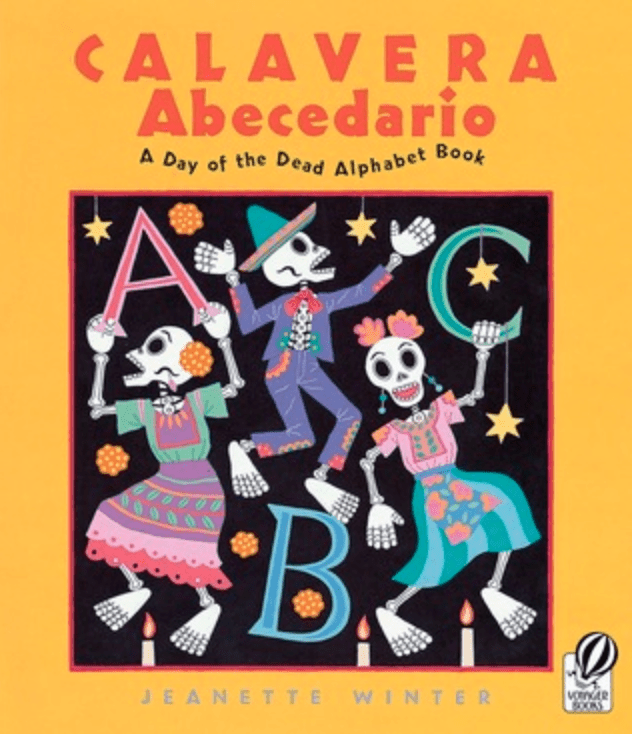
The Day of the Dead / El Dia de los Muertos. A Bilingual Celebration by Bob Barner and translated by Teresa Mlawer contains simple English rhymes translated into Spanish. Calaveras dance and play music as they accompany two children throughout their day while they celebrate the traditions of their ancestors. According to the endnotes, the skeleton characters were inspired by Mexican artist Jose Guadalupe Posada.
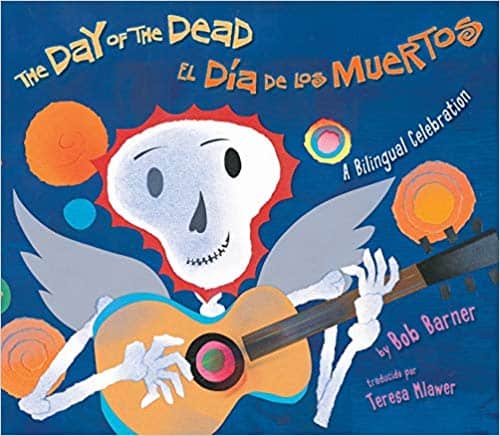
Gustavo, The Shy Ghost by Mexican artist Flavia Z. Drago is about finding the courage to make friends.
Google Arts & Culture has great photos and captions that help bring the traditions of Día de los Muertos alive. Be sure to preview and choose materials relevant to your students.
Make a Day of the Dead Puppet from Red Ted Art

More Dia de los Muertos Celebrations
While Día de los Muertos is typically thought of as a Mexican holiday, it is also celebrated in other Latin and South American countries. In Brazil, it is called Dia de Finados and in El Salvador it is called La Calabiuza. Read more and compare the traditions.
Go Further!
Visit our Mexico Profile Page for a detailed map, country infographic, photo gallery, video, learning activities and more!
Mexico Research Project Young explorers are guided through the research process to create a final presentation using interactive templates. Topics include geography, food, clothing, sports, language, animals, and holidays.
